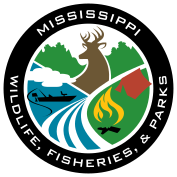
Written by: Chandler Strickland
Edits by: Pierce Young
Managing the number of deer in relation to the food resources available is one of the most critical aspects of sustaining a healthy, productive deer population. In wildlife biology, the term carrying capacity refers to the maximum number of animals a given area can support without degrading the habitat over time. When deer numbers remain below or at carrying capacity, food and cover are plentiful, deer remain in good condition, and habitat health is maintained. However, overpopulation occurs when the number of deer exceeds this natural limit.
Impacts of Excessive Deer Densities
When deer numbers surpass what the land can support, the consequences ripple through the entire ecosystem:
- Habitat Degradation – Over-browsing can strip forests of the undergrowth (starting with the highest-quality deer forage), reduce diversity in plant species, and destroy regeneration of valuable trees such as oaks. Over time, this loss of habitat quality affects not just deer but also songbirds, wild turkeys, and other wildlife species.
- Reduced Body Condition – With limited food, deer will struggle to maintain muscle and fat reserves. This can be especially detrimental during late-Winter or late-Summer stress periods. Ultimately, following generations of deer will become smaller to compensate for the limited resources.
- Lower Reproductive Success – Poor nutrition leads to reduced pregnancy rates, smaller fawns, and lower fawn survival (fawn recruitment).
- Decreased Antler Quality – Bucks require ample nutrition for antler growth. When food is scarce, antler size and quality suffer, even in genetically superior deer. As bucks are born into poorer conditions, their genetic antler potential is suppressed.
Four Key Tools for Balancing Deer and Habitat
Successfully managing deer populations involves a combination of strategies—each complements the others.
- Harvest Management
Removing antlerless deer (does) through regulated hunting is the one critical way to control population growth. Harvesting does reduces the number of mouths competing for the same limited resources and can help stabilize the herd at a level the habitat can support. Tracking harvest data, such as age, weight, and lactation status, helps fine-tune future harvest recommendations. - Habitat Management
Healthy, productive habitats supports more deer by increasing carrying capacity. Techniques such as timber thinning, prescribed fire, and field management can manage natural vegetation like forbs and shrubs. These practices also create more cover, reducing stress on deer and providing benefits to a variety of other wildlife species. - Food Plot Management
While food plots should never replace sound habitat management, they can play an important supplemental role—particularly during seasonal stress periods. Planting high-protein forages in spring and summer and energy-rich crops in fall and winter can help offset natural food shortages, for at least part of a deer's diet (except necessary woody browse). Strategic placement near cover can also reduce deer travel stress and predation risk for fawns. - People Management
Perhaps the most overlooked aspect of deer management (and often the most difficult) is aligning the goals and expectations of everyone involved—landowners, hunters, neighbors, lease members, etc. A shared understanding of the property’s carrying capacity, habitat potential, and harvest goals helps ensure consistent, long-term results.
Balancing deer numbers with the land’s ability to support them is an ongoing process that requires observation, record-keeping, and the flexibility to adapt. When deer populations are kept in balance with habitat quality, both the deer herd and the broader ecosystem thrive.
For more information on managing deer populations and habitat health, visit our website at
www.mdwfp.com/wildlife-management-info
To meet with a wildlife biologist to discuss wildlife management on your property visit